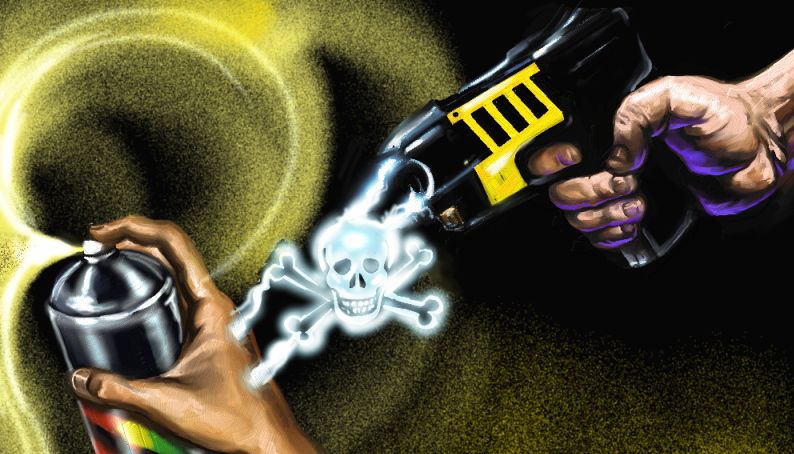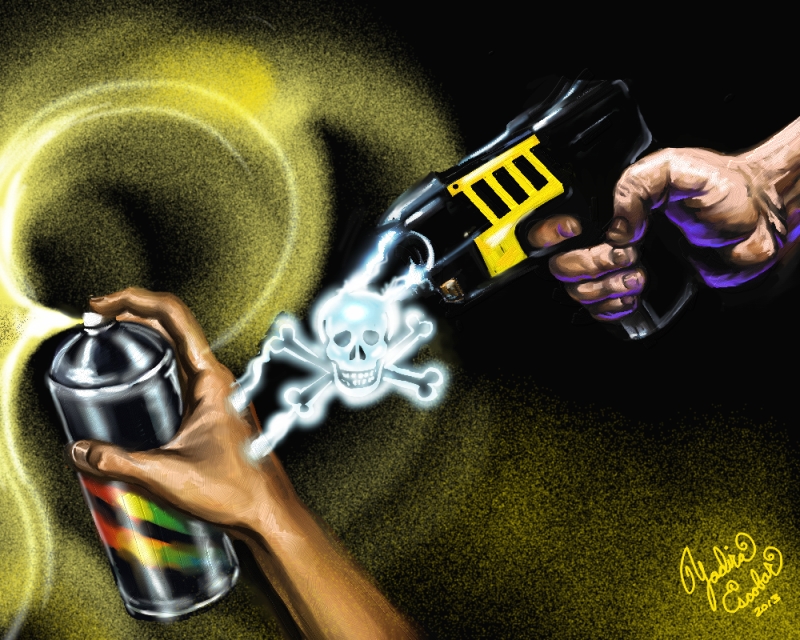
Police electroshock
MIAMI – While the rightist press kept us informed about the antics of Antúnez, who said that “at any moment a rebellion can explode in Cuba, which the Cuban government will try to repress,” Israel Hernández-Llach, a Hispanic youth barely 18, died from electric jolts to his chest dealt by a Miami Beach policeman.
South Florida is rapidly becoming a very violent place, and the death of this teenager, who was caught painting graffiti on a wall of an abandoned McDonald’s restaurant, is of little importance to people who worship both private property and money and always come up with excuses for those who abuse the weak.
Already the neofascist right-wingers are using the social networks to justify this crime and are siding with the police. Through the Internet, they share videos of unruly dissidents in Cuba who resist being arrested by law enforcers (after staging unauthorized protests and creating public disorder), in which cases “the Cuban policeman is the bad guy.” Of course.
It’s unavoidable for me to compare the two ways to treat civilians and I don’t see the Cuban policemen using shields, Taser guns or batons against social indiscipline, the way we see every day in the “representative democracies.”
The United Nations Committee Against Torture has denounced the use of the Taser (electric pistol) as a tool that violates human rights, but Taser International Inc., founded in the early 1990s in Arizona, continues to make about $110 million a year in sales to police agencies and private individuals despite the deaths its product inflicts.
Electroshock seems to be the favorite method of the police because, although it produces a searing pain that immobilizes the victim, it leaves no marks. The electric current these weapons discharge imitates the signals sent by the nerves and confuses the motor muscles, provoking a very painful neurological chaos that could serve as a concealed means of torture.
To appeal to the conscience of policemen is difficult in a country where civil rights organizations are continuously slandered by the Republican right and conservative forces, which depict civic struggle as the acts of rebellious – and even antisocial – youths.
Police abuses are a direct product of the distancing between the “forces of order” and civilian society they should serve but from which they receive neither their salaries nor legal authority.
That huge gap between a policeman and the community grows wider in cities where the concentration of capital is in a few hands, and the scant social mobility turns policemen into the guardians of the greater private property (thus they don’t protect small property) and makes them believe they’re protecting it best when they confront and repress any sign of indiscipline with all possible rigor.
It’s no secret to anyone that policemen tend to slap more traffic fines on old and cheap automobiles than luxury cars and that the courts of justice are visited more by the poor, accused of something or other.
Of course, it’s preferable to be electrocuted than shot by a policeman, but there’s also the danger of many abuses, because the electric discharges are used in situations where the use of firearms is not justified.
The death of this young man, who had shown his artwork in some Miami galleries, has made an impression on the community and sends a negative signal about the increasingly serious repression against civilian society.



